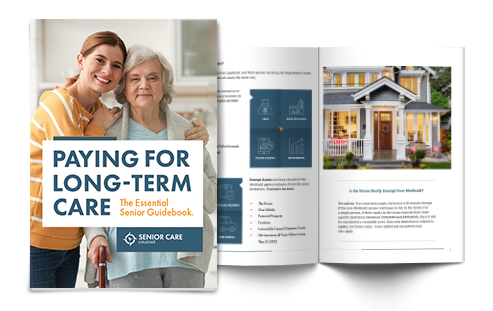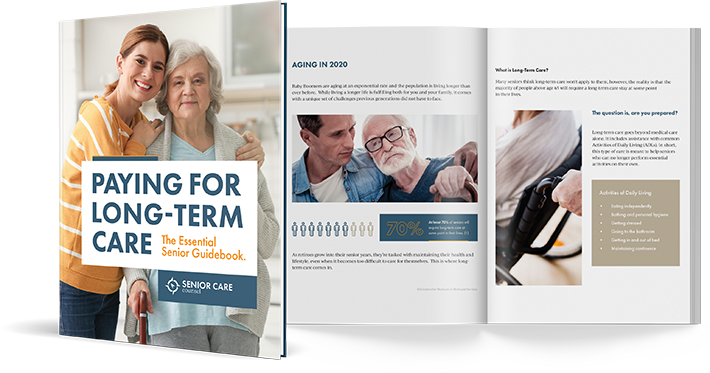Can You Keep the Family Home and Still Qualify for Medicaid?

When a loved one needs long-term care, families often worry about the fate of their home. Do you have to give it up to qualify for Medicaid? Fortunately, the answer is not necessarily. Read on to learn what you need to know about what you can do to safeguard your home.
Understanding Medicaid and Asset Limits
To qualify for long-term care Medicaid, applicants must meet both income and asset limits. In most states, that means having less than $2,000 in countable assets if you’re single. However, Medicaid allows for several key exempt assets, and your home is often one of them.
The details vary by state, but generally speaking, Medicaid will not count your primary residence as a countable asset if you live in the home (or intend to return there). It also counts if your spouse, a child under 21, or a disabled dependent lives in the home. That means in many cases, especially for married couples where only one spouse requires care, you can keep the family home and still qualify for benefits. But there are important nuances and risks to consider.
Read More: How to Qualify for Medicaid without Spending All Your Money
When the Primary Residence Is Exempt
Here are some of the most common scenarios in which the home is not counted against the Medicaid asset limit:
You’re Living in the Home or Intend to Return
If the Medicaid applicant is in a nursing home temporarily, then the home can be excluded as long as the applicant declares an intent to return. However, if there is an expectation that they may return, this could jeopardize their long-term care coverage.
A Spouse Still Lives in the Home
Medicaid’s spousal protection rules allow the healthy spouse (also known as the community spouse) to remain in the home, and the property is not considered a countable asset.
A Child or Dependent Resides There
If a minor child, a blind or disabled adult child, or a caretaker child lives in the home, the property may also be exempt.
That being said, some states place an equity value cap on the exempt amount (e.g., $713,000–$1,071,000 in 2025). And if the applicant’s equity in the home exceeds that cap, Medicaid may consider a portion countable unless a spouse or qualified dependent lives there.
Read More: What Assets Can You Keep on Medicaid?
Understanding Medicaid Estate Recovery
Even if your home is exempt while you’re alive, it can still be vulnerable after your death. That’s because of a process called Medicaid Estate Recovery. Under federal law, states are required to attempt to recover the costs of long-term care services paid by Medicaid from the estates of deceased beneficiaries, often starting with the home.
There are, however, some things you can do to avoid this. Consider:
- Transferring the home to a qualified child or caregiver at least five years before applying
- Using an Irrevocable Trust to shield the asset (if done outside the 5-year lookback period)
- Working with an elder law attorney to navigate your state’s specific estate recovery laws
Planning Strategies to Protect the Home
While Medicaid does provide protections, proactive planning is the best way to ensure that your home stays in the family. Here are a few options:
Asset Protection Trusts
Placing your home in an irrevocable trust (at least five years before applying for Medicaid) can remove it from your countable assets and prevent it from being subject to estate recovery.
Medicaid Compliant Annuities
For married couples, these tools help protect excess assets while still preserving eligibility, ensuring the spouse living at home has the support they need.
Each of these approaches comes with rules and implications, so be sure to consult a qualified professional before making changes.
What about Selling the Home?
Selling the home during the Medicaid application process is possible, but proceeds from the sale will become countable assets, which must be spent down before eligibility can be granted. These funds can be used to purchase a Medicaid Compliant Annuity, though many families avoid selling the home outright unless necessary.
Take the Next Step
Medicaid rules surrounding the family home are complex, but with the right guidance, you can protect your most important asset and still get the care you need.
Answer a few questions about your situation to connect with a specialist.
[FREE] GET OUR PLANNING GUIDE:
"Paying for Long-Term Care - The Essential Senior Guidebook"This guide takes a deep dive into the landscape of long-term care and how to pay for it without going broke, including the answers to your top questions surrounding Medicaid.
GET MY COPY
